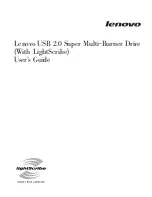
3
THERMAL CAPACITY
Since there is slippage within the flow charge during acceleration,
heat is generated from friction. The thermal capacity of the
FLEXIDYNE mechanism is based on balancing this heat
generated during acceleration against the cooling time between
accelerations. The amount of heat generated is determined
by the amount of horsepower dissipated by slipping and the
duration of each acceleration. If the flow charge weight is light,
the heat generated will not be as great as that which would
be generated with a heavier flow charge, when compared at
the same acceleration time. A longer time between starts will
dissipate more heat; therefore, higher starting horsepowers may
be transmitted, or longer acceleration times may be allowable.
(See Starting Cycle)
Acceleration times shown in Table 1 are for starting frequencies
of one start per hour or less. If starting frequency is more than
once per hour, use acceleration time for actual starting cycle
shown in Table 2.
Acceleration times listed in Tables 1 and 2 are the MAXIMUM
permissible for the various starting frequencies listed. The
MINIMUM acceleration time required for proper FLEXIDYNE
mechanism operation is 1 to 1½ seconds. This is the time required
for the flow charge to be uniformly distributed around the housing
cavity before the unit "locks in". Any acceleration time between
the minimum and maximum listed is acceptable, although a
shorter acceleration time will generally provide longer wear life.
For applications requiring a specific acceleration time (within
these limits) flow charge may be added or removed to produce
the required results.
Stalled
— If a jam-up stalls the drive, the motor continues to
run and the FLEXIDYNE mechanism slips. This causes heat to
be generated at twice the rate of normal acceleration. Therefore,
the allowable slipping time, when stalled, is half the allowable
acceleration time given in Table 1.
Starting Cycle
is the time from the beginning of one acceleration
to the beginning of the next. Allowable acceleration times in Table
2 are based on the assumption that the FLEXIDYNE mechanism
will be running continuously except for a momentary stop before
the next start. If the stop is more than momentary, decrease the
actual starting cycle by one-half the stopped time before using
Table 2; for example, with a 50 minute actual starting cycle of
which 20 minutes is stopped time, decrease 50 by half of 20 to
give 40 minutes as the starting cycle time to use for Table 2.
Grouped Starts
— For several starts grouped together followed
by uninterrupted running, add the acceleration times of all starts
and consider it as the time for one start. The starting cycle would
be the time from the beginning of one group of starts to the
beginning of the next group.


























